Table of content
Introduction
Cooking a tender, restaurant-quality steak at home doesn’t require a gourmet kitchen or a fortune spent on premium cuts. Even supermarket steaks, often labeled as “budget-friendly” or “everyday” options, can transform into a melt-in-your-mouth masterpiece with the right techniques. The key lies in understanding the science behind meat tenderization, mastering heat control, and avoiding common pitfalls like overcooking or improper seasoning. This guide will walk you through every step, from selecting the right cut to serving a steak that rivals your favorite steakhouse. Whether you’re a novice cook or a seasoned home chef, these tips will elevate your supermarket steak game.

Choosing the Right Supermarket Steak
Not all steaks are created equal, but supermarkets offer a variety of cuts suited for pan-searing. Here’s what to look for:
- Cut Selection: Opt for cuts like sirloin, ribeye, New York strip, or flank steak. These cuts have a balance of marbling (intramuscular fat) and tenderness. Avoid overly lean cuts like round steak, which can become tough if not cooked properly.
- Thickness Matters: Aim for steaks that are at least 1.5 inches thick. Thicker cuts allow for better heat distribution, reducing the risk of overcooking the exterior while the interior remains raw.
- Grading: While supermarket steaks are often ungraded, look for terms like “USDA Choice” or “Prime” if available. These indicate better marbling and tenderness.
- Freshness: Check the sell-by date and ensure the meat is bright red with minimal browning. Avoid packages with excessive liquid, which may indicate freezer burn or improper storage.
Preparation: The Foundation of Tenderness
Proper preparation ensures your steak cooks evenly and absorbs flavors.
1 Thawing Safely
If your steak is frozen, thaw it gradually in the refrigerator (not at room temperature) to prevent bacterial growth. Place the steak on a plate or tray to catch drips and thaw for 24–48 hours, depending on thickness.
2 Bringing to Room Temperature
Remove the steak from the fridge 30–60 minutes before cooking. This ensures even cooking, as cold meat can seize up when hit with high heat, leading to uneven doneness.
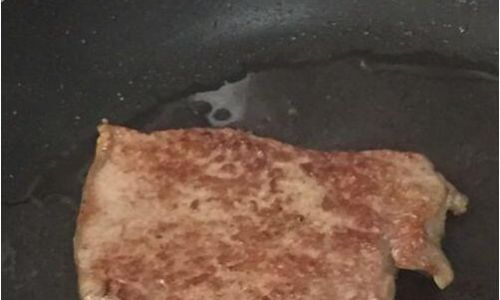
3 Patting Dry
Use paper towels to blot excess moisture from the steak’s surface. A dry steak sears better, creating a flavorful crust (the Maillard reaction) instead of steaming in its juices.
4 Seasoning Strategically
- Salt: Generously salt the steak 40 minutes to 1 hour before cooking. This allows the salt to penetrate the meat (dry brining), enhancing flavor and tenderness. Avoid salting right before cooking, as it draws moisture to the surface.
- Pepper and Spices: Apply freshly cracked pepper and other spices (garlic powder, paprika, etc.) just before searing to prevent burning.
Mastering the Pan-Searing Technique
Pan-searing creates a caramelized crust while locking in juices. Here’s how to execute it flawlessly:
1 Choosing the Right Pan
A cast-iron skillet or heavy-bottomed stainless steel pan is ideal. These materials retain heat well, ensuring an even sear. Avoid nonstick pans, which can’t handle high temperatures and may emit fumes.
2 Preheating the Pan
Heat the pan over medium-high to high heat until it’s screaming hot. Add a high-smoke-point oil (avocado, grapeseed, or canola) just before searing. The oil should shimmer but not smoke.
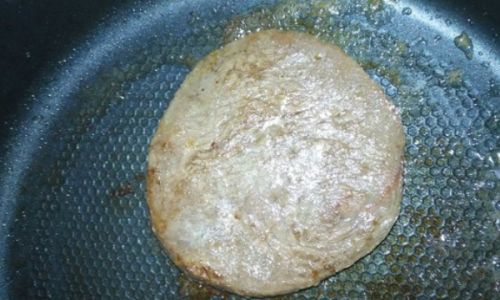
3 Searing the Steak
- Placement: Gently lay the steak in the pan away from you to prevent oil splatters.
- Undisturbed Cooking: Let the steak sear for 3–4 minutes without moving it. This develops a deep crust.
- Flipping: Use tongs (not a fork, which pierces the meat) to flip the steak. Cook the second side for another 3–4 minutes.
- Edge Searing: For extra crispiness, hold the steak upright with tongs to sear the fat-cap edges.
Achieving Desired Doneness
Cooking time varies based on thickness and desired doneness. Use a meat thermometer for precision:
- Rare: 120–130°F (49–54°C) – Cool red center.
- Medium-Rare: 130–135°F (54–57°C) – Warm red center.
- Medium: 135–145°F (57–63°C) – Pink center.
- Well-Done: 155°F+ (68°C+) – No pink, but be cautious—supermarket steaks can dry out.
Pro Tip: The “touch test” can estimate doneness without a thermometer. Rare feels springy, medium-rare is firm but yielding, and well-done is very firm.
The Art of Resting
Resting is non-negotiable for tenderness. After cooking, transfer the steak to a cutting board and tent it with foil. Let it rest for 5–10 minutes (longer for thicker cuts). During resting, juices redistribute, preventing a dry texture.
Enhancing Flavor and Tenderness (Optional Steps)
1 Basting with Butter
For a richer flavor, add a knob of butter, garlic, and fresh herbs (thyme, rosemary) to the pan during the last minute of cooking. Tilt the pan and spoon the melted butter over the steak repeatedly.
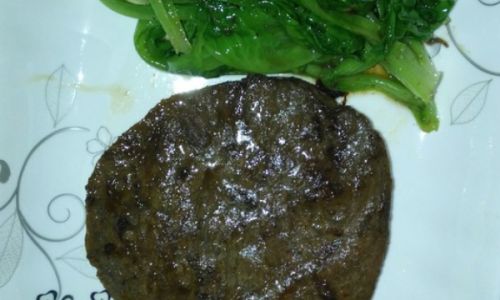
2 Sous-Vide Precision
For foolproof results, use a sous-vide immersion circulator. Seal the steak in a bag with oil and herbs, then cook it in a water bath at your desired temperature. Finish with a quick sear for texture.
3 Marinating (For Tougher Cuts)
If using flank or skirt steak, marinate in an acidic mixture (citrus juice, vinegar, yogurt) for 4–24 hours. Acid tenderizes tough fibers, but avoid over-marinating, which can make the meat mushy.
Common Mistakes to Avoid
- Overcrowding the Pan: Cook one steak at a time to maintain high heat.
- Using Low Heat: Low heat steams the steak instead of searing it.
- Cutting Immediately: Slicing too soon releases juices, drying out the meat.
- Overcooking: Supermarket steaks lack the fat of premium cuts, so err on the side of medium-rare.
Advanced Techniques for Supermarket Steaks
1 Reverse Sear Method
- Low and Slow: Roast the steak in a 275°F (135°C) oven until it reaches 10°F (5°C) below your target temperature.
- Finishing Sear: Sear in a hot pan for 1–2 minutes per side. This method ensures even doneness.
2 Enzymatic Tenderizers
Apply a paste of pineapple, papaya, or kiwi (which contain meat-tenderizing enzymes) 30 minutes before cooking. Rinse thoroughly to avoid a mushy texture.
3 Mechanical Tenderizing
Use a meat mallet or jacquard tenderizer to puncture the steak, breaking down tough fibers. Pound gently to avoid tearing the meat.
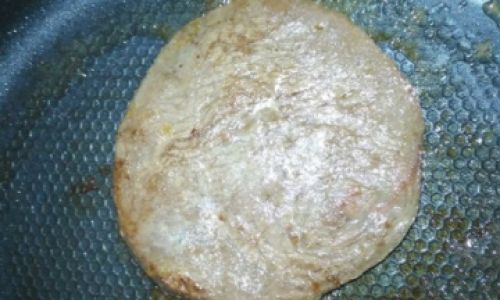
Serving Suggestions
- Sauces: Pair with chimichurri, red wine reduction, or compound butter.
- Sides: Roasted vegetables, mashed potatoes, or a crisp salad complement the steak’s richness.
- Wine Pairing: A bold Cabernet Sauvignon or malbec enhances the meat’s flavors.
Troubleshooting Guide
| Problem | Solution |
|---|---|
| Steak is tough | Marinate longer or use enzymatic tenderizers. |
| Uneven cooking | Use a thicker cut or reverse sear method. |
| Lack of crust | Ensure the pan is hot and dry the steak well. |
| Overcooked | Monitor temperature closely; remove at 130°F for medium-rare. |
Conclusion
Cooking a tender supermarket steak is an achievable skill that rewards patience and technique. By selecting the right cut, mastering heat control, and embracing resting time, you can turn even the most humble steak into a culinary triumph. Experiment with marinades, basting, and advanced methods to discover your preferred style. Remember, practice makes perfect—so fire up that skillet and enjoy the process. Your next steak dinner doesn’t have to be a gamble; with this guide, it’s a guaranteed win.
FAQs
- Should I oil the steak or the pan?
Oil the pan to prevent burning and achieve a better crust. - Can I use olive oil?
Avoid extra-virgin olive oil due to its low smoke point. Opt for avocado or grapeseed oil instead. - How long should I rest the steak?
5–10 minutes for cuts under 2 inches; 15–20 minutes for thicker steaks. - What if my steak is too thick?
Use the reverse sear method or finish it in a 400°F (200°C) oven after searing. - Can I cook frozen steak directly?
No—thaw completely to ensure even cooking.
With these tips, your supermarket steak will never disappoint. Bon appétit!

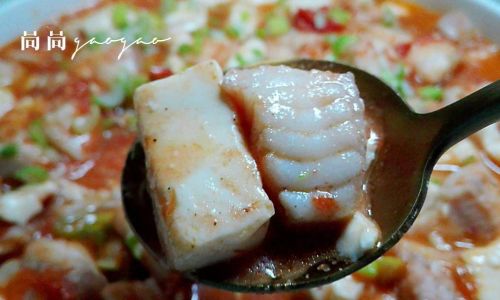

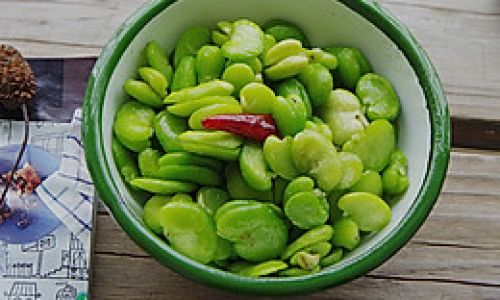
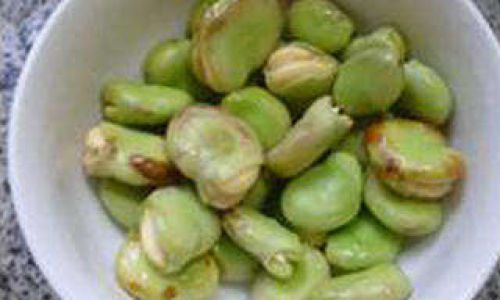

0 comments